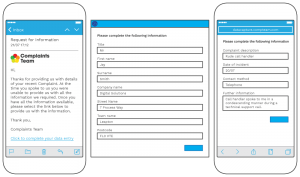Cycle time reduction is a key element of process improvement that can significantly improve all of the core strategic dimensions of process execution. In this article, you’ll learn what process cycle time is, why it’s important and how to reduce it.
In the first instance we have the four core strategic dimensions of process design. At the layer below this we have a few very important tactical considerations that feed into these strategic objectives, none more important than process cycle time reduction.
What is Process Cycle Time?
Cycle time is the elapsed time between the start and end of a process. When cycle time is important, it’s usually measured in days. For example: a mortgage application, an insurance claim, grant application, job application, finance application or complaints.
Cycle time reduction creates happier customers. The most common root cause of customer dissatisfaction is centred around the complaint ‘it took too long’. Reducing cycle time means customer expectations are more likely to be met. Customers also like to feel in the loop. Regular updates are important in short cycle times, let alone longer ones. Failing to meet this demand increases dissatisfaction the longer the process goes on.

Optimal process outcomes and reduced cycle times are often associated. In many scenarios the likelihood of an optimal process outcome decreases the longer the process takes; especially where the customer has a choice.
The link between lower process cycle times and reduced process execution costs are well known. A reduction in the number of updates and telephone calls, in addition to a lower occurrence of failure demand instances, is all very well documented. High quality processes cost less to execute and have lower cycle times.
Compliance is often about cycle time. The FCA requires complaints to be dealt with according to explicit timescales as do many other regulatory organisations.
How To Reduce Process Cycle Time
So, we have established that process cycle time is important. How do we reduce it? Fortunately, many of the improvement tactics for each of the core strategic dimensions overlap and improve multiple elements.
We may reduce cycle execution time through automation, and by reducing the amount of steps in a process.
Parallel execution of process elements using specialist teams will result in better cycle times than serial execution by single teams. However, these benefits should be balanced against the complexity of co-ordinating multiple teams.

Process execution transparency is also key to reducing cycle time. It is important to understand what stages a process passes through during its execution and the nature of each of these stages. One-and-done stages rarely cause inbuilt process delays. However, process that have lots of elements often cause bottlenecks. As such, they’re prime targets for in-built process cycle time controls.
Multi-element process stages can also be a prime candidate for parallel execution by specialist teams.
When to Opt for Parallel Execution
One of the most common process patterns has an information collection/investigation stage. This makes this type of process ideal for parallel execution, with each sub process having its own process controls.

Increased communication speed reduces cycle time substantially. Utilising email and telephone rather than post based correspondence is obviously an improvement.
In addition, data collection via structured, integrated, communication increases speed and reduces rekeying.
MICology’s low-code workflow platform utilises an ingenious subsystem called DCV (Data Collection View) that allows agents to send interactive data collection views to any party in a process (either automatically or manually).
Next, it will integrate their answer directly into the underlying database and/or workflow.
Automatic updates via text, email or app remove the effort required keeping a customer up to date – and happen at the speed of light. As a result, you have an enlightened customer who is far less likely to pull on your resources. Consequently, the resource can be re-deployed into closing the loop more quickly.
The Importance Of Identifying Defects
Defect monitoring and elimination can seem like an additional overhead to begin with, but it is vitally important in long term improvement of all the core strategic dimensions. Ultimately defect elimination reduces process execution and cycle times. Where an occurrence of a defect can only be reduced, it should be brought into the process to be made visible and dealt with.

Reporting
Finally, reporting of cycle times using real time dashboards supports improvement. The adage ‘you can’t manage what you can’t measure’ holds true. Real time reporting of key metrics, including cycle time, is key to utilising measurements for improvement. The MICology low-code workflow platform automatically records cycle times of each defined process, including the cycle time between each defined process stage.
In summary: cycle time reduction is a key element of process improvement that can significantly improve all of the core strategic dimensions of process execution.

